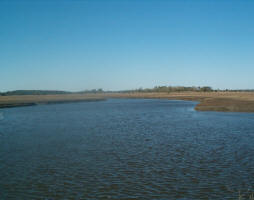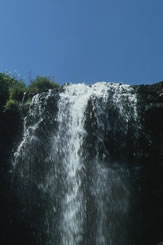- Regional water observation mechanism
- Regional Cooperation Assessment
- Water Quality Monitoring (JP)
-
Water scarcity and drought (JP)
- WG meeting, Madrid, 2010-02-17
- Water Scarcity Private Area
- WG meeting, Seville, 2007-06-19
- WG meeting, Brussels, 2006-09-26
- Water Scarcity and Drought Survey (2007)
- Phase I documents 2004-2006
- EU WG on Water Scarcity and Drought
- 20100217
- Background documents
- Desertification, Drought and water scarcity
- EC Expert group on WS&D meeting, Venice 13-14 October 2011
- Halting desertification in Europe
- Water Security
- Groundwater (JP)
- Waste water reuse (JP)
- Shared Water Resources Management (JP)
- Linking rural development and water management (JP)
- Waste management
- Water institutions
- Climate Change
- Floods
- Desalination
- Right to Water
- Irrigation
- Satellite data
- Water reports & data
- Hydrology
- Sanitation
- Gender and IWRM
- ArabWAYS
- Non-Revenue Water
- Virtual Water & Water Footprint
- WANA Water Panel
- Water Demand
- Water Governance
- Water Pricing
- Water accounts
- Water nexus Energy
- Geosciences
- Rural Management
 Challenges for drought mitigation in Africa: The potential use of geospatial data and drought information systems
Challenges for drought mitigation in Africa: The potential use of geospatial data and drought information systems
Understanding, monitoring and mitigating drought is a very difficult task as a consequence of theintrinsic nature of the phenomenon. In addition, assessing the impact of drought on ecosystems andsocieties is also a complex task, because the same drought severity may have different consequences indifferent regions and systems due to the underlying vulnerabilities. New technologies based on geospatial information are available to determine the risk and vulnerability of a system to a drought and todevelop monitoring and early warning systems based on real-time information to support decisionmaking. To improve drought preparedness and mitigation, geospatial datasets based on climate information, Earth Observation Systems and statistical and dynamical modelling methodologies can makea noticeably difference in mitigating drought impacts in Africa. In this article we illustrate how thedevelopment of drought information systems based on geospatial technology, that combines static andreal-time information, could improve the possibilities of drought mitigation in Africa. We stress that it isnecessary to go beyond past attempts to manage drought risk based on a reactive crisis-responseapproach, by promoting drought mitigation and preparedness at the national and regional levels. Forthis purpose the development of drought information tools is fundamental for the implementation ofdrought management plans and to support real-time decision-making.
| Creator | Sergio M. Vicente-Serrano a, * , Santiago Beguería b , Luis Gimeno c , Lars Eklundh d , Gregory Giuliani e , Derek Weston f , Ahmed El Kenawy g , Juan I. López-Moreno a , Raquel Nieto c , Tenalem Ayenew h , Diawoye Konte i , Jonas Ardö d , Geoffrey G.S. Pegramj |
|---|---|
| Publisher | 2012 Elsevier |
| Type of document | Report |
| Rights | Public |
| File link |
http://ephyslab.uvigo.es/publica/documents/file_272Appl_Geog_2012_34_471-486.pdf |
| File link local |
|
| Source of information | Applied Geography/ 2012 Elsevier Ltd. All rights reserved |
| Keyword(s) | drought, mitigation, climate change |
| Subject(s) | HYDRAULICS - HYDROLOGY , INFORMATION - COMPUTER SCIENCES , MEASUREMENTS AND INSTRUMENTATION , METHTODOLOGY - STATISTICS - DECISION AID , NATURAL MEDIUM , POLICY-WATER POLICY AND WATER MANAGEMENT , PREVENTION AND NUISANCES POLLUTION , RISKS AND CLIMATOLOGY , TOOL TERMS , WATER DEMAND |
| Geographical coverage | Africa |
 you are not logged in
you are not logged in





